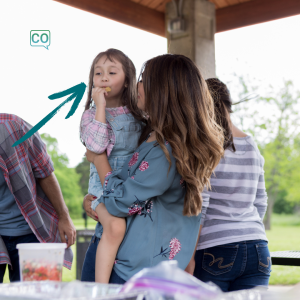Learn essential Dutch family vocabulary and common verbs for talking about relatives. This beginner A1 lesson covers possessive pronouns and practical dialogues that help you confidently discuss family members and social interactions.
Listening & reading materials
Practice vocabulary in context with real materials.
A1.5.2 Cultuur
Gebruik van praten, spreken, babbelen en kletsen
Use of praten, spreken, babbelen and kletsen
Vocabulary (24) Share Copied!
Exercises Share Copied!
These exercises can be done together during conversation lessons or as homework.
Exercise 1: Reorder sentences
Instruction: Make correct sentences and translate.
Exercise 2: Match a word
Instruction: Match the translations
Exercise 3: Cluster the words
Instruction: Divide the words into two groups: immediate family members and extended family members.
Directe familieleden
Uitgebreide familieleden
Exercise 4: Translate and use in a sentence
Instruction: Pick a word, translated and use the word in a sentence or dialogue.
1
De dochter
The daughter
2
Kletsen
To chat
3
De broer
The brother
4
Het gezin
The family
5
Praten
To talk
Oefening 5: Conversation exercise
Instructie:
- Describe the indicated relationships between the family members. (Describe the indicated relationships between the family members.)
Teaching guidelines +/- 10 minutes
Example phrases:
|
Juliette is de vrouw van Mark. Juliette is the wife of Mark. |
|
Alexis en Louise zijn de grootouders van Anna. Alexis and Louise are the grandparents of Anna. |
|
Marco is de zoon van Birgit en Stephan. Marco is the son of Birgit and Stephan. |
|
De jongen en het meisje zijn broer en zus. The boy and the girl are siblings. |
|
Caitlin is de moeder van twee meisjes. Caitlin is the mother of two girls. |
|
Het meisje heeft twee broers. The girl has two brothers. |
| ... |
Exercise 6: Dialogue Cards
Instruction: Select a situation and practice the conversation with your teacher or fellow students.
Exercise 7: Multiple Choice
Instruction: Choose the correct solution
1. Ik ____ vaak met mijn familie over ons werk.
(I ____ often talk with my family about our work.)2. Jij ____ met je broer over zijn kinderen.
(You ____ talk with your brother about his children.)3. Hij ____ graag met zijn zus en haar gezin.
(He ____ likes to talk with his sister and her family.)4. Wij ____ vaak met onze ouders over onze familie.
(We ____ often talk with our parents about our family.)Exercise 8: My family
Instruction:
Verb Tables
Praten - To talk
Onvoltooid Tegenwoordige Tijd
- Ik praat
- Jij praat
- U praat
- Hij praat
- Zij praat
- Wij praten
- Jullie praten
- Zij praten
Spreken - To speak
Onvoltooid Tegenwoordige Tijd
- Ik spreek
- Jij spreekt
- U spreekt
- Hij spreekt
- Zij spreekt
- Wij spreken
- Jullie spreken
- Zij spreken
Exercise 9: De bezittelijke voornaamwoorden (mijn, jouw, zijn,...)
Instruction: Fill in the correct word.
Grammar: The possessive pronouns (mijn, jouw, zijn,...)
Show translation Show answerszijn, mijn, onze, Mijn, jouw, jullie, haar
Grammar Share Copied!
It's not the most exciting thing, we admit, but it’s absolutely essential (and we promise it'll pay off)!
A1.5.3 Grammatica
De bezittelijke voornaamwoorden (mijn, jouw, zijn,...)
The possessive pronouns (mijn, jouw, zijn,...)
Verb conjugation tables for this lesson Share Copied!
Praten to talk Share Copied!
Onvoltooid tegenwoordige tijd (OTT)
| Dutch | English |
|---|---|
| (ik) praat | I talk |
| (jij) praat | you talk |
| (hij/zij/het) praat | he/she/it talks |
| (wij) praten | we talk |
| (jullie) praten | you talk |
| (zij) praten | they talk |
Don't see progress when learning on your own? Study this material with a certified teacher!
Do you want to practice Dutch today? That is possible! Just contact one of our teachers today.
Introduction to Family Vocabulary and Communication
This lesson focuses on everyday family-related vocabulary and conversational verbs in Dutch, perfect for beginners at level A1. You will learn the names of family members ranging from immediate family like de vader (the father) and de moeder (the mother) to extended relatives such as de oom (the uncle) and de tante (the aunt). Understanding these terms helps you talk about your family and social interactions confidently.
Key Verbs for Talking
The lesson emphasizes different verbs used for speaking, including praten, spreken, babbelen, and kletsen. You will practice conjugating the common verb praten (to talk) in the present tense and learn how to use it in sentences, such as Ik praat vaak met mijn familie (I often talk with my family).
Possessive Pronouns and Sentence Practice
Another focus is on possessive pronouns like mijn (my), jouw (your), and zijn (his), which are essential to indicate relationships clearly. Example sentences include "Wie is jouw broer en hoe oud is hij?" (Who is your brother and how old is he?). These sentences help learners practice describing family members.
Interactive and Practical Dialogues
You’ll find practical dialogues for common scenarios, such as introducing family members, chatting in a café about family size, and discussing living arrangements with neighbors. This makes the learning experience natural and context-oriented.
Notes on Language Differences and Useful Tips
In Dutch, possessive pronouns agree with the noun being owned and are placed before the noun, similar to English, but the verb forms like praten differ according to the subject, e.g., "Ik praat" versus "Wij praten." Unlike English, Dutch has multiple verbs for "to talk," each with subtle nuances, so observing these verbs in context will help you choose the right one.
For practice, try phrases like Mijn moeder kookt graag in het weekend (My mother likes cooking on weekends) and Onze kinderen spelen elke middag in de tuin (Our children play in the garden every afternoon).
This lesson provides you with a solid foundation to speak confidently about your family, enhancing your daily conversations in Dutch.



































